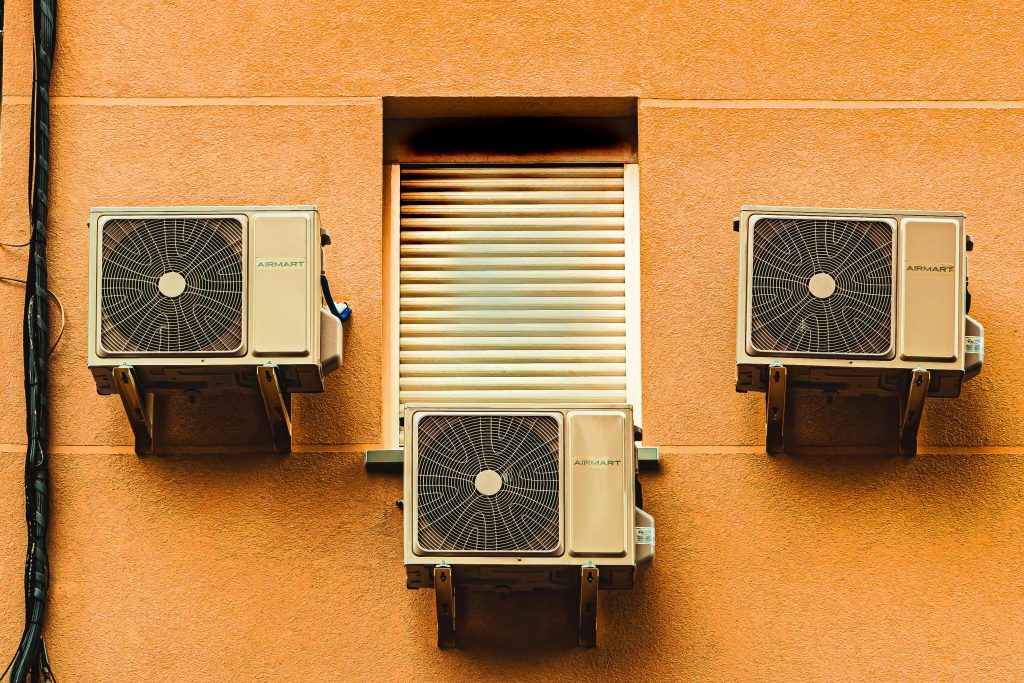Airflow, Comfort, and Clean Living: What Your HVAC System Really Does
Life on Florida’s Space Coast is defined by warm sea breezes, salty air, and humidity that can wrap around you like a thick blanket, especially in beach towns such as Satellite Beach. These coastal conditions shape more than your weekend plans; they influence how hard your home’s heating and cooling equipment must work to keep every room comfortable. When summer highs hover in the 90s and afternoon thunderstorms roll in with tropical force, your HVAC system shifts into overdrive, pulling moisture from indoor air, filtering out sand and pollen, and pushing cool, conditioned air through every vent.
Photo by Jose Antonio Gallego Vázquez
Left unchecked, that extra workload can lead to wear and tear faster than you’d expect, shortening your system’s lifespan and causing spikes in your energy bill. That’s why understanding how this unseen machine handles airflow, humidity, and filtration helps you maintain a healthier home and avoid costly surprises when the thermostat can’t keep up. To get the best performance, you also need local expertise tuned to the exact climate challenges that come with living steps from the Atlantic.
Even if you don’t live on Florida’s coast, it’s important to understand your HVAC system and why it’s so important outside of providing you with cool air or heat. Most homeowners take their HVAC system for granted until something goes wrong, yet this invisible network of ducts, filters, comfort, air quality, and energy efficiency. Beyond simply heating and cooling spaces, modern and mechanical components work around the clock to maintain the delicate balance between HVAC systems that serve as the lungs of a home, constantly circulating, filtering, and conditioning the air that families breathe every day. The complexity of these systems often remains hidden behind walls and in basements, leaving many people unaware of the sophisticated processes that keep their living environments healthy and comfortable.
When David moved into his newly purchased home, he assumed the occasional stuffiness and uneven temperatures were normal quirks of an older house. After months of dealing with persistent allergies, higher than expected energy bills, and rooms that never seemed to reach the right temperature, he discovered that his HVAC system had been operating with clogged filters, blocked vents, and ductwork that leaked conditioned air into unused spaces. What he initially dismissed as minor inconveniences were actually symptoms of a system crying out for attention and proper maintenance.
Today we’ll reveal the hidden world of HVAC functionality through practical insights that transform homeowners from passive users into informed advocates for their indoor environment. Understanding how airflow patterns affect comfort, why proper filtration matters for health, and how system efficiency impacts both monthly bills and environmental responsibility empowers people to make smarter decisions about their home’s mechanical heart. The magic unfolds when homeowners discover that a well-maintained HVAC system doesn’t just regulate temperature; it creates a foundation for healthier, more comfortable, and more sustainable living.
Start with a Trusted Local Partner
Because coastal air is saltier and more humid than inland air, equipment corrodes faster and mold gains a foothold more quickly inside ductwork. That’s why homeowners often rely on a seasoned HVAC company in Satellite Beach, FL or a company in your local area to inspect and fine-tune their systems. A reputable local team understands how salt spray can coat outdoor condenser coils, how sandy winds block filters, and how sudden humidity spikes tax an under-maintained unit. By scheduling routine service, you get pro-level cleanings, refrigerant checks, and duct evaluations that stop small problems from turning into mid-summer breakdowns. Experienced technicians can also recommend energy-efficient upgrades, right-size replacement units, and humidity controls tailored to coastal living, making your system run smoother while lowering electric bills.
How Your System Manages Airflow
Every HVAC system has a single mission: to move conditioned air to the rooms that need it. A blower motor pulls indoor air through return vents, pushes it across either hot furnace coils or cold evaporator coils, and sends it back through supply ducts. If ducts develop leaks or blockages, air pressure drops, and rooms at the far end of the line become stuffy or sweltering. You might notice uneven temperatures or vents that barely whisper. Regular duct inspections spot crushed sections, disconnected joints, or debris buildup so technicians can seal gaps, remove obstructions, and balance airflow. When air moves freely, every room reaches the target temperature faster, saving energy and extending the equipment’s life.
Keeping Humidity in Check
Anyone who has lived on Florida’s coast knows humidity is more than sticky discomfort. It invites mold spores, dust mites, and drywall damage. Modern HVAC systems help control moisture by condensing water vapor on cold coils, then draining it outside. If coils are dirty or airflow is weak, condensation can’t form properly, causing clammy air and higher indoor humidity. Whole-home dehumidifiers work alongside your main unit to pull extra moisture from the air before it circulates through vents. Keeping relative humidity between 40 % and 50 % not only feels more comfortable but also reduces respiratory irritants and prevents wooden furniture from warping. A calibrated hygrometer placed in living areas gives you a real-time snapshot of conditions so you know when to run a dehumidifier or call for a service check.
Air Filtration for Cleaner Living
Every time your blower runs, it forces air through a filter. In a coastal setting, that filter traps beach sand, pet dander, pollen, and microscopic salt crystals carried on breezes. A clogged filter chokes airflow, making the blower work harder and decreasing system efficiency. Standard disposable filters catch larger particles, but households with allergies or asthma may benefit from pleated MERV 11 filters or add-on HEPA filtration systems that capture finer pollutants. Some homeowners install ultraviolet (UV) lights inside ducts to neutralize mold spores and bacteria before they recirculate. Whatever filter type you choose, mark a reminder to inspect or replace it every 30 days during peak cooling months, or sooner if you own pets or keep windows open frequently.
Efficiency and Energy Savings
An HVAC unit that runs smoothly keeps your power bill in check. When coils are clean, refrigerant is at the correct pressure, and ducts are sealed, your system meets target temperatures quickly, then cycles off. Dirty coils, often coated by salty air, insulate heat exchange surfaces, forcing the compressor to run longer. Leaky ducts dump cooled air into attics and crawlspaces where it’s wasted. By combining professional cleanings with homeowner tasks like changing filters and clearing shrubbery around outdoor units, you can boost overall efficiency by 10 % to 20 %. Installing a smart thermostat that learns your schedule further trims energy use by gently adjusting temperatures when you’re away or asleep.
Seasonal Maintenance Tips
Think of maintenance as routine dental checkups for your HVAC. Schedule a professional tune-up twice a year, once in early spring before the cooling rush and again in fall ahead of any heating needs. Technicians will measure airflow, tighten electrical connections, lubricate moving parts, and verify that condensate drains aren’t clogged. Between visits, keep outdoor condenser fins free of leaves, grass clippings, and beach sand. Indoors, vacuum registers to remove dust bunnies that can break free and clog filters. If your home still feels stuffy or rooms never quite cool, keep a maintenance log and share it with your service provider so they can pinpoint recurring issues quickly.
When to Consider an Upgrade
Even the best-maintained systems wear out, typically after 10 to 15 years in a salty environment. If your unit needs frequent repairs, delivers uneven temperatures, or causes power bills to creep upward, replacement might be more cost-effective than patchwork fixes. Newer models feature variable-speed compressors that adjust output in small increments, maintaining steady comfort while using less electricity than older single-speed units. They also pair well with zoning systems that let you cool only occupied rooms. A reliable local contractor can perform a load calculation, factoring in square footage, insulation, and window exposure to recommend the right-sized unit. Too small wastes energy by running nonstop; too large, short cycles, leaving humidity behind.
Building a Foundation for Healthy Indoor Living
The relationship between HVAC systems and quality of life extends far beyond simple temperature control, encompassing air quality, humidity management, and energy efficiency that directly impact daily comfort and long-term health. Every well-functioning system begins with proper maintenance, quality filtration, and an understanding of how airflow patterns influence the distribution of conditioned air throughout living spaces. When homeowners recognize their HVAC system as an investment in their family’s wellbeing rather than just a mechanical necessity, they position themselves to make informed decisions that yield lasting benefits.
Sustainable indoor comfort requires ongoing attention to system performance, regular maintenance schedules, and upgrades that improve efficiency without compromising air quality. Smart HVAC management involves monitoring energy usage, replacing filters consistently, and addressing minor issues before they become costly repairs. These proactive approaches work together to extend system lifespan while maintaining optimal performance, creating a positive cycle that reduces both environmental impact and household expenses.
The transformation from HVAC ignorance to informed stewardship represents a shift toward more conscious homeownership that prioritizes health, comfort, and efficiency. Success comes from understanding that proper airflow, consistent maintenance, and quality filtration create the foundation for clean living that supports both immediate comfort and long-term wellness. With the right knowledge and consistent care, HVAC systems become silent partners in creating homes that nurture both families and the environment for years to come.






